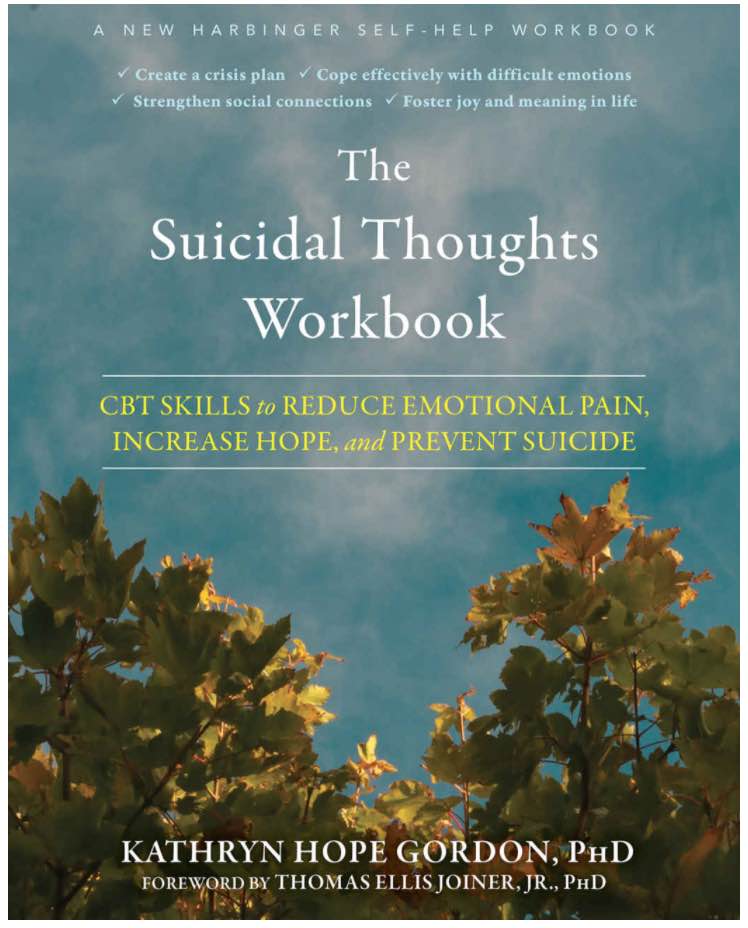
“I have suicidal thoughts, but I don’t dare tell a therapist.” That comment was left on a blog post I wrote a couple years ago about what happens when you mention suicide in psychotherapy.
This individual wasn’t alone. Reader after reader described painful experiences they’d had after telling their therapist they were suicidal:
- Instead of “sensitivity and compassion,” a man said he got “handcuffs and bad treatment.”
- A woman said that instead of healing she experienced “additional trauma from having been milled through the system.”
- One person said his therapist “refused to see me anymore as soon as I raised the topic.” Another therapist made him “call a suicide hotline while I was in the office with them (still not sure what the point of that was).”
- Many people said they would never tell their therapist if they were thinking of hurting themselves, for fear of being locked in a psychiatric ward against their will.
- An attorney who represents involuntarily committed patients said frankly of the mental health profession: “Do not trust those guys.”
Fellow CBT psychologist Kathryn Gordon, author of The Suicidal Thoughts Workbook, described similar experiences among her own patients when I spoke with her recently on the Think Act Be podcast. Not uncommonly “patients in therapy want to share that they’re having suicidal thoughts” that they believe they “would never act on,” said Gordon, but they fear that talking about them could lead to involuntary hospitalization. I’ve heard similar statements from my own patients.

The Suicidal Thoughts Workbook by Dr. Kathryn Gordon offers an evidence-based approach for increasing hope and preventing suicide.
To be honest, I would be very cautious about mentioning suicide, too, if I were in therapy. I’ve been troubled by how suicidality is handled in the mental health profession ever since I started my training over twenty years ago, when “safety contracts” were standard practice for many therapists. Patients who didn’t want to be hospitalized against their will were required to sign a form saying they promised not to kill themselves.
In addition to being ineffective, these unenforceable “contracts” emphasize risk and therapist liability, at the expense of the suffering of the suicidal person. It feels dehumanizing to be treated as a risk to be managed—and as a potential lawsuit to avoid—right after telling someone we’re so miserable we want to die. No wonder many people choose not to disclose their suicidal thoughts.
At the same time, I understand where therapists are coming from when they focus on managing risk at the expense of connecting with their patients. It’s scary when someone is seriously considering suicide, and to feel like we may be the last hope for keeping them alive—and even more so when we’re afraid of being sued for malpractice and losing our license.
A big part of the problem is the assumption that if someone attempts or completes suicide while in therapy, the therapist must be to blame. But the sad truth is that suicide can’t always be prevented. A person who’s determined to end their life may steadfastly deny being suicidal, right up to the point of their suicide.
That was what happened with a patient I lost to suicide many years ago. When I spoke about my sadness and guilt after he died, a senior colleague urged me not to blame myself. “We know there’s a certain mortality rate for conditions like heart disease or diabetes,” he told me, “and the same is true for severe mental illness. We can’t always prevent people from killing themselves.”
Safety is important, of course, and we want to do everything we can to save the lives of those who are suffering. Unlike safety “contracts,” personalized safety plans have been shown to be effective in reducing suicide risk—without emphasizing therapist liability like signed contracts do. One of the best parts of Dr. Gordon’s workbook is that it helps the reader to develop a comprehensive safety plan for when they’re feeling suicidal. (Click here for a Safety Plan Template from the Suicide Prevention Lifeline website.)
I appreciate Dr. Gordon’s deeply human perspective on suicide, which is apparent throughout her excellent workbook. Her emphasis is on meeting the person where they are, rather than focusing on the sense of danger we can feel when someone brings up suicide. The aim of her therapy—and her workbook—is to figure out “how we can soothe some of that pain, and make your life more like something you want to live.”
Gordon embodies an open, receptive stance to disclosures of suicidal thinking, rather than acting scandalized or shifting suddenly to crisis mode in a way that can feel like abandonment. The message she strives to communicate is that “I’m going to be here with you as we try to walk out of this.” We could learn a lot from Gordon’s commitment to staying with a suicidal person through their crisis.
Clearly there’s room for improvement with how my profession responds when a person is thinking of suicide. It’s a shame that people often don’t talk about their suicidal thoughts and feelings with their therapist or psychiatrist, who arguably is best-equipped to help in these situations.
At some point suicide will touch all of us in one way or another, whether it’s losing someone we love or having serious thoughts about killing ourselves. My father’s father died by suicide, and I’ve had my own dark periods when the idea of death had a lot of appeal.
We need a deeply humane response when we’ve come to the end of ourselves and we reach out for help. Therapists and authors like Kathryn Gordon are doing invaluable work as we find empathic and effective ways of meeting one another in a time of crisis.
The full conversation with Dr. Kathryn Gordon is available here: Ep. 146: How to Save a Life by Meeting Despair with Love and Connection.
Please note that the opinions in this post are my own and do not necessarily reflect those of Dr. Gordon.
If you have had thoughts of suicide and are concerned about your safety, please tell someone you trust. You can also call the National Suicide Prevention Lifeline 24/7 at 800-273-TALK (-8255). In a true crisis, call 911 if you live in the US or the appropriate emergency number if you live elsewhere.
